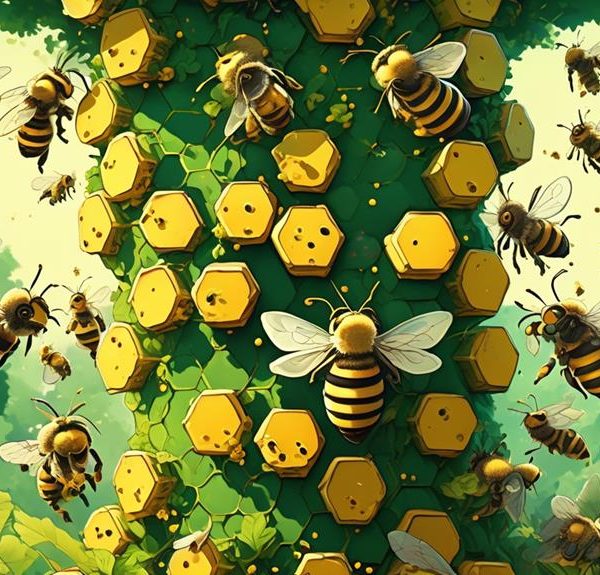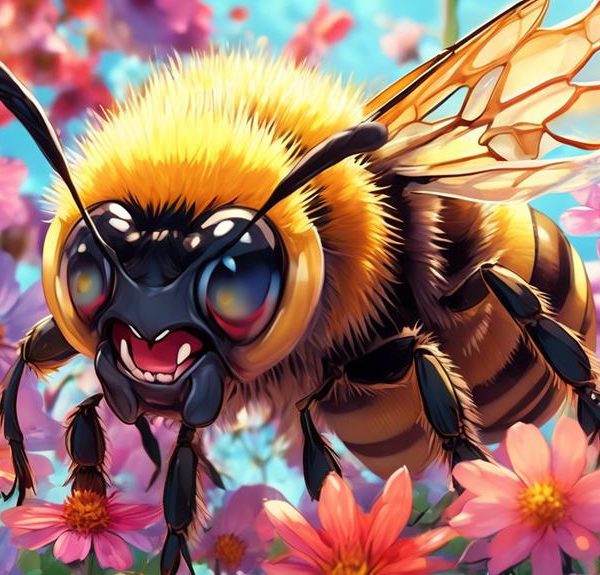Uncover the intriguing reasons behind the unsettling act of bees committing regicide, a survival strategy more complex than you may think.

Why Would Bees Kill Their Queen?
Drawing parallels to the infamous Julius Caesar, imagine being the queen of your colony, only to be overthrown and killed by your own subjects. You'd think it's a scenario straight out of a dramatic play, but it's an actual occurrence in the world of bees.
Why would bees, known for their structured societies and driven by the instinct to survive and propagate, commit such a regicide? It's not a senseless act of rebellion, but rather a survival strategy these insects employ under certain circumstances.
As you explore this topic, you'll find that the reasons are more complex and fascinating than you might initially believe.
Key Takeaways
- Bee colonies function as a superorganism, with the queen playing a pivotal role in the group's survival and productivity.
- Supersedure, the process of eliminating an unfit queen, can occur due to factors such as declining productivity, injury or disease, poor mating, low genetic diversity, or environmental stressors.
- The process of eliminating the queen involves worker bees collectively deciding she is no longer fit to rule, raising a new queen, and often killing the old queen through a method known as 'balling'.
- Queen slaying is a survival strategy driven by the collective will of the worker bees, ensuring the continuation of the bee lineage and the survival of the hive.
Understanding Bee Societies
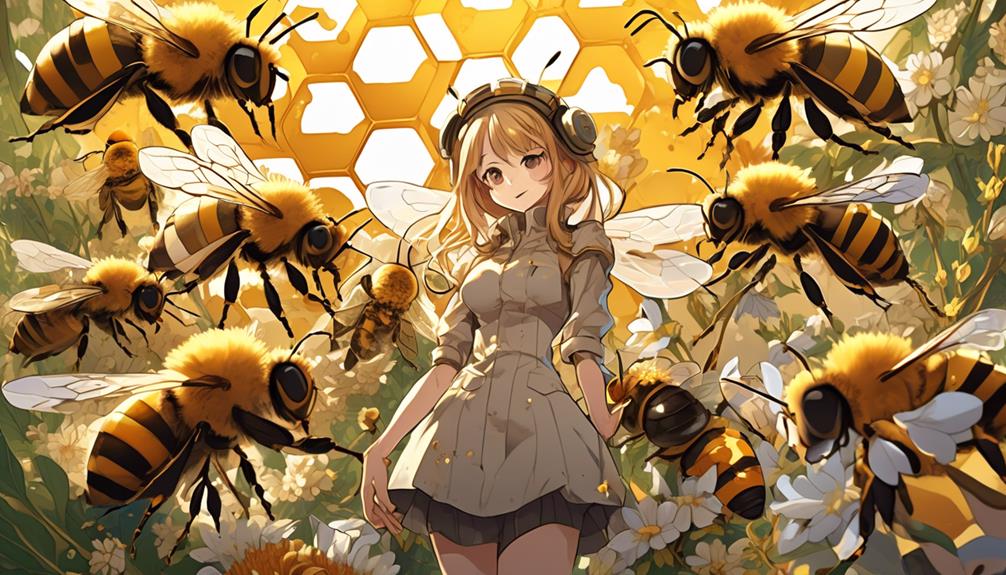
To fully grasp why bees might resort to killing their queen, you need to first understand the intricately organized societies within a bee colony. These societies function as a superorganism, where individual bees can't survive without the colony, and the colony can't thrive without each individual bee's contribution.
There are three classes of honey bees: the queen, the drones, and the worker bees. The queen, the only fertile female, lays all the eggs. Drones, the males, have one sole purpose: to mate with a new queen. They're even denied food during scarcity. Worker bees, sterile females, make up the bulk of the colony and perform all the tasks necessary for its survival.
The bee society operates on a strict hierarchy – the queen on top, followed by the workers, and then the drones. However, it's not a dictatorship. Decisions about food, nest location, and even the queen's execution are collective decisions made by worker bees. When the queen's productivity declines, or her pheromones – that maintain the colony's unity and suppress the workers' fertility – weaken, the workers decide it's time for regicide.
Thus, understanding bee societies reveals a complex, democratic, and somewhat ruthless world.
The Role of the Queen Bee
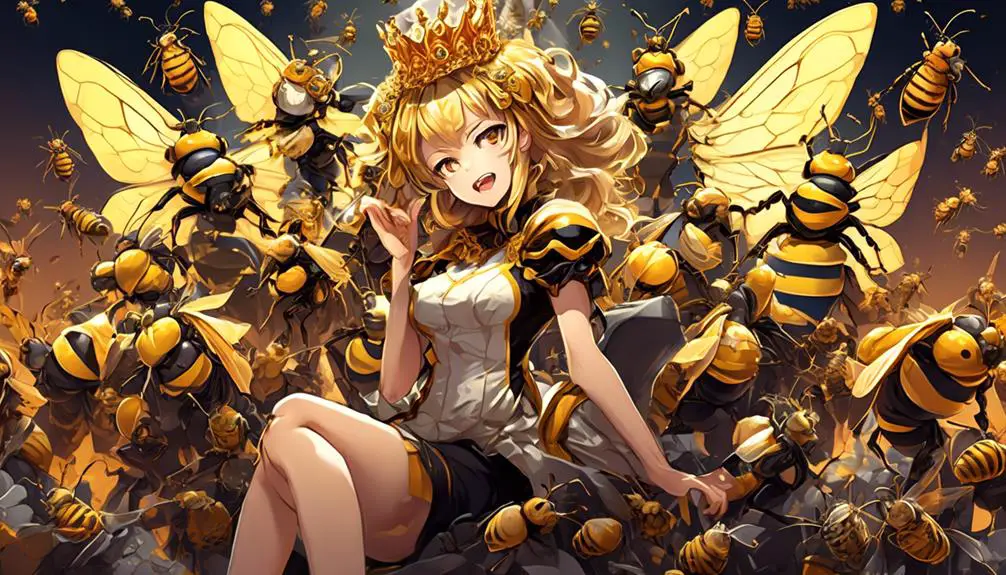
In a bee colony, the queen bee's role – an intricate blend of motherhood and monarchy – is pivotal for the group's survival and productivity. You'd observe her as the heart of the hive, laying thousands of eggs daily, ensuring the colony's continuous growth. This fertility isn't just for show; it's crucial for the colony's functioning.
Yet, her royalty isn't absolute. She's not the one calling the shots. Instead, the worker bees decide her fate. They control her reproduction, her movement, her life, and even her death. Should they deem her unfit, they'll kill her and replace her with a new queen.
To understand this complexity, let's delve deeper:
Role of Queen Bee | Controlled by Worker Bees |
|---|---|
Egg laying | Yes |
Movement within the hive | Yes |
Life and Death decisions | Yes |
Selection of mating partners | No |
Creation of new colonies | No |
You see, while the queen bee is essential for the colony's survival and growth, she's not the absolute ruler. Her life is dictated by the collective decision of the workers, who act for the greater good of the colony.
Reasons for Queen Bee Supersedure

Why would worker bees decide to overthrow their queen, a process known as supersedure? It's not a decision taken lightly, and it's driven by a complex set of biological triggers.
Primarily, supersedure happens when the queen's productivity declines. She's the only bee in the hive who can lay fertilized eggs, and when she can't keep up with the demand, workers take action. They begin to raise new queens in specially prepared cells. This isn't a hasty action—it's a calculated response to ensure the survival of the hive.
Supersedure can also occur if the queen is injured or has a disease. Worker bees are programmed to detect these issues, and they'll quickly initiate the supersedure process.
A less common reason is poor mating. If the queen hasn't mated well or her genetic diversity is low, the worker bees may decide to replace her. This ensures the colony's future health and diversity.
Finally, environmental stressors can trigger supersedure. Harsh weather, lack of food, or exposure to pesticides can impair the queen's ability to lay eggs, leading workers to act.
In essence, supersedure is a drastic but necessary measure to safeguard the colony's future.
Process of Eliminating the Queen
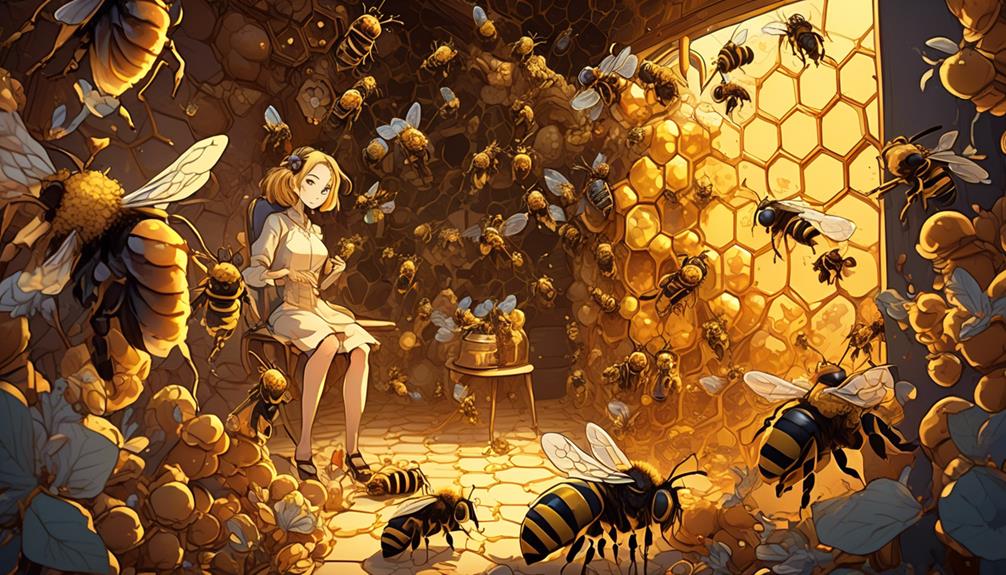
So, how exactly do worker bees go about eliminating their queen? The process begins with the worker bees collectively deciding that the queen is no longer fit to rule. This could be due to old age, decreased fertility, or disease. The hive then initiates a process known as "supersedure," where a new queen is raised while the old queen is still alive.
The following table outlines the steps in this process:
Step | Description | Outcome |
|---|---|---|
1. | Decision | Worker bees decide the queen is unfit |
2. | Supersedure Initiation | Worker bees begin rearing a new queen |
3. | Supersedure Cell Creation | Workers feed a selected larvae royal jelly |
4. | Queen Elimination | The old queen is killed |
The old queen is often killed by a method known as "balling." Worker bees form a tight cluster around the queen, suffocating and overheating her until she dies. This process is brutal yet essential for the survival of the hive. It's a process that underscores the harsh reality of nature, where survival and continuation of the species are paramount.
Survival Strategy Behind Queen Slaying
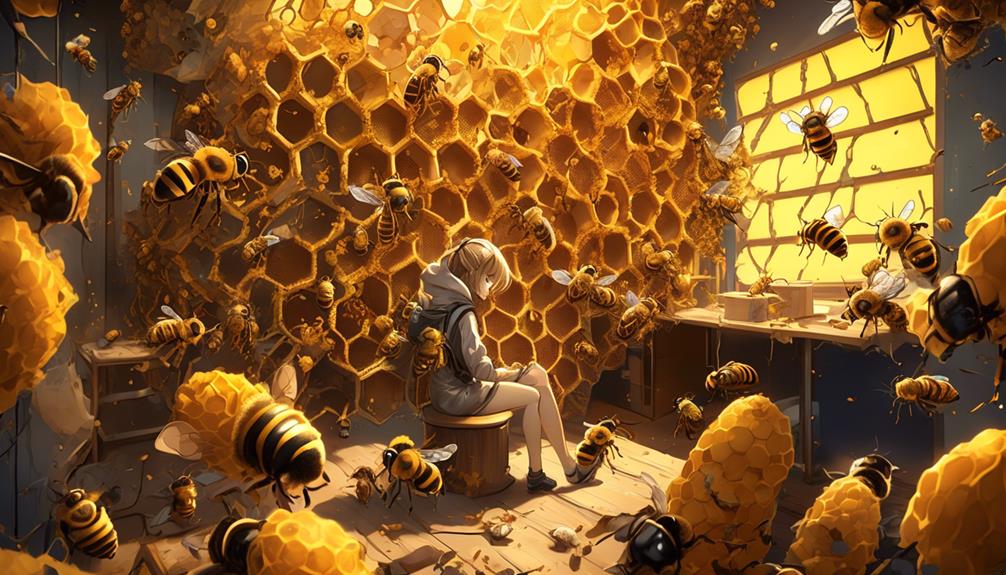
Understanding the survival strategy behind the slaying of the queen bee reveals the hive's ruthless approach to ensuring its longevity and prosperity. This act isn't a random occurrence of violence; it's a calculated decision made by the worker bees for the collective survival.
The queen's primary function is reproduction. However, when she's no longer fertile or her egg production decreases, she becomes more of a liability than an asset.
You see, bees operate on a tight energy budget. Every bee in the hive has a role contributing towards the colony's survival. An unproductive queen means more mouths to feed and less productivity, tipping this delicate balance. Hence, the workers take drastic action by 'balling' the queen, surrounding her and effectively heating her to death.
This cruel-sounding act is, in fact, a survival strategy. By killing the old or unproductive queen, the workers clear the way for a new, fertile queen to take her place. This ensures the continuation of the bee lineage and the survival of the hive. It's a stark reminder of nature's unforgiving side: adapt, perform, or perish.
Case Study: Bee Colony Revolts
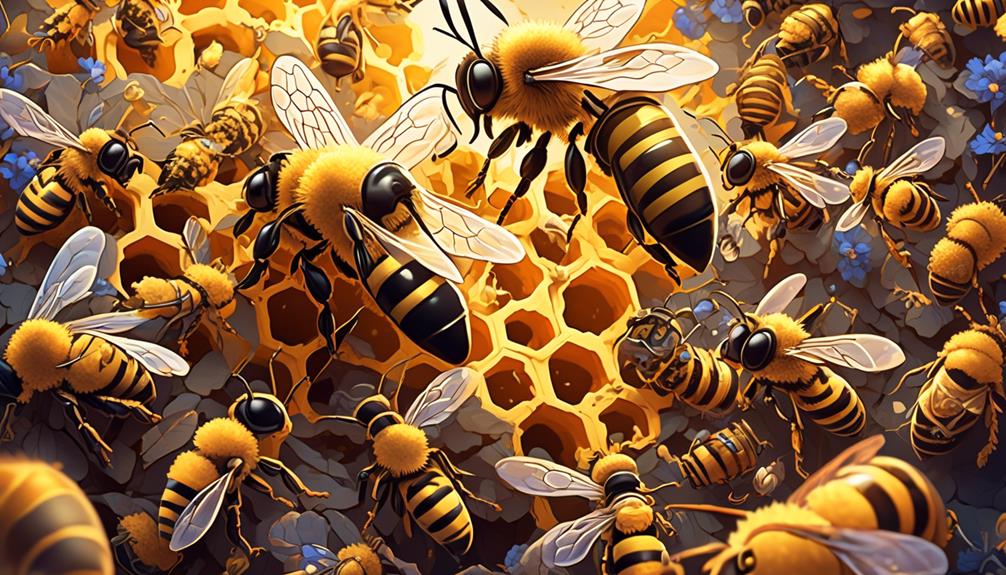
In examining the fascinating phenomenon of bee colony revolts, you'll find that these uprisings aren't chaotic outbursts but strategic moves undertaken by worker bees to optimally preserve their hive. There's a meticulous process behind these revolts, guided by the colony's collective intelligence.
Take, for instance, a case study of a honeybee hive where the queen is failing. You'll notice that worker bees don't impulsively kill their queen. Instead, they start raising potential successors, a process known as 'supersedure'. This ensures the hive won't be left queenless, maintaining continuity and survival.
Interestingly, the revolt isn't always successful. Sometimes, the old queen defeats her potential successors, reasserting her dominance. At other times, the workers' chosen queen takes over. It's a complex, dynamic process that's indicative of the hive's adaptability and resilience.
It's crucial to remember that these revolts aren't acts of aggression but survival tactics. Be it replacing an unproductive queen or managing a disease outbreak, these revolts are manifestations of the hive's need to survive. They're driven by the collective will of the worker bees, illustrating the intricate social structures and survival strategies that characterize bee colonies.
Frequently Asked Questions
What Is the Average Lifespan of a Queen Bee?
You're asking about the lifespan of a queen bee, right?
On average, a queen bee can live between 3 to 5 years. However, it's not uncommon for some to survive up to 7 years.
This is significantly longer than her worker bee counterparts, who typically live just a few weeks.
It's her unique diet of royal jelly that contributes to her longevity.
But remember, numerous factors can influence a queen bee's lifespan.
Are There Other Insects or Animals That Exhibit Similar Behavior of Killing Their Queen or Leader?
Yes, there are other insects that exhibit similar behavior. In ant colonies, for example, workers sometimes kill their queen if she's seen as unfit or if there's a power struggle.
Meerkats also display this behavior; if a dominant female dies, there's often a violent battle for succession.
It's a brutal, but natural aspect of the animal kingdom. Survival often trumps loyalty, and it's the fittest who survive and procreate.
How Is a New Queen Chosen After the Old Queen Is Killed?
In bee colonies, when the old queen is killed, a new queen isn't just randomly picked. You'd think it's chaos, but it's not.
Worker bees select several young larvae and feed them royal jelly. This diet transforms them into potential queens. They'll then pupate in special cells.
The first to emerge becomes queen, and she'll typically kill her unhatched rivals. It's a brutal, yet fascinating process.
How Does the Death of a Queen Bee Impact the Overall Health of the Hive?
When a queen bee dies, it significantly disrupts the hive's health and harmony. You'll notice worker bees scrambling to replace her, often resulting in a weaker, less fertile queen.
The hive's productivity drops as less honey is produced and fewer bees are born. Without a robust queen, the hive's population declines, its defense weakens, and it's more susceptible to disease.
It's crucial for the hive's survival that a strong, fertile queen is in place.
How Often Does a Bee Colony Typically Kill and Replace Their Queen?
In general, you'd find a bee colony replaces their queen roughly every two to five years. But it's not just about age. Factors like low fertility or disease can trigger this change earlier.
It's a tactical move – the colony's survival hinges on a strong queen. If her performance dips, they'll 'supersede' her, raising a new queen while the old one's still alive.
It's a fascinating, brutal part of bee society, but fundamental to their success.
Conclusion
So, you see, bees don't just randomly kill their queen. It's a calculated decision, part of their survival strategy. If she's not performing up to par, they'll supersede her.
It's a brutal, yet fascinating, process, underlining the incredible intricacy of bee societies. The case of bee colony revolts further highlights their complex behaviors.
Life in the hive isn't as simple as it seems, it's a world full of strategic decisions, sacrifice, and survival.

